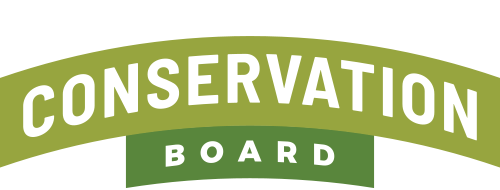A group of Native American Indians known as the Woodland Indians once called this area home. Over 200 years ago they lived along the banks of the Squaw Creek. they shaped tools from chert, molded pottery from clay mixed with grit, hunted the abundant game and gathered food from the land. A large conical-shaped burial mound is located toward the north end of the park. It is believed that when people of high status in the tribal unit died, their bodies were placed on ridge tops above the riverside campsites and large earthen mounds were constructed over them. The mound tells us that Native Americans recognized the spot as a sacred place many years ago.
In the early 1900’s, the area that is now the picnic grounds was then an active farmstead. The old wooden barn that housed the family’s livestock still stands and helps us explain the farming practices of yesteryear. There are three sections to the foundation of the home that once stood. One part was stone, another brick and yet another poured concrete telling us there were three additions to the house. There is also a root cellar that served as the family’s storm shelter and food storage area. Just west of the farmstead is the remnants of the old stagecoach road that once connected Osceola to Indianola. It angled right past the house and barn. The Warren County Conservation Board purchased Hickory Hills in December of 1976 and has maintained it ever since.
Your trip along the Great Western Trail is a journey into history. It will take you through the site of Lida, past the munitions train derailment and fire near North River and across the Churchville Prairie. In 1914 no point in Iowa was more than 12 miles from a railroad. They served many small-town elevators and coal yards. The track opened in 1899 by the Chicago, St. Paul and Kansas City Railroad. The Chicago & Northwestern was the last train company to use the rail line which originally ran from Des Moines to St. Joseph, Missouri. You will find concrete mile markers giving the distance between the marker location and Kansas City. The trail is full of adventure for the nature enthusiast, the history buff, and for those who simply wish to leave the noise and congestion of the city. Put on your hiking boots or hop on your bike and enjoy the trail.
Immerse yourself in what Iowa used to look like. A rolling area with a wooded creek, that area consists mainly of grasses and forbs. Woodland species use it extensively. Woodland species use it extensively. This prairie is the largest track of native prairie in the county. The two hundred acres on the west side of 80th Avenue have never been plowed. This land contain high quality native prairie vegetation.
A group of Native American Indians known as the Woodland Indians once called this area home. They lived along the banks of the South River. they shaped tools from chert, molded pottery from clay mixed with grit, hunted the abundant game and gathered food from the land. There are many conical-shaped burial mounds located ton the trail. It is believed that when people of high status in the tribal unit died, their bodies were placed on ridge tops above the riverside campsites and large earthen mounds were constructed over them. While the bones have long since decayed, the mounds still tell us that this spot was recognized as a sacred place many years ago.

